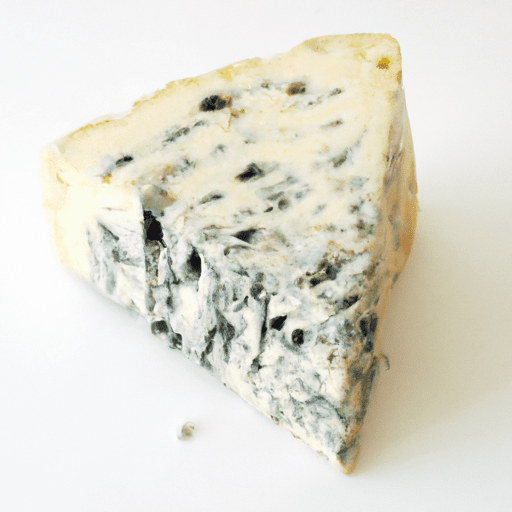The Allure of Bleu Cheese: A Treasure for Food Enthusiasts
When it comes to flavorful cheeses, one variety that stands out for its unique taste and unmistakable appearance is bleu cheese. This blue-veined beauty has been captivating the palates of food enthusiasts for centuries, adding a touch of indulgence to various cuisines. In this blog post, we will dive into the world of bleu cheese, exploring its taste, common culinary uses, nutritional value, and intriguing history and facts.
The Taste of Bleu Cheese: Bold, Earthy, and Divine
Bleu cheese, also known as blue cheese, is an assertive and robust cheese that boasts a distinctive taste. Its characteristic blue veins, which are actually a result of the presence of the Penicillium mold, give this cheese its signature appearance. As a result, it has a tangy, pungent flavor profile. These flavors can range from mild and creamy with hints of sweetness to bold and intense, depending on the variety of bleu cheese you choose.
Versatile Culinary Uses of Bleu Cheese
Bleu cheese’s remarkable taste and crumbly texture make it a prized ingredient in many culinary creations. Here are some popular ways to incorporate it into your culinary repertoire:
Salads: Bleu cheese shines in salads. Its tangy and salty notes perfectly balance the sweetness of fruits like pears or strawberries, and the crunchiness of nuts adds a delightful contrast of textures.
Cheeseboards: Elevate your cheeseboard by adding a wedge of bleu cheese alongside complimentary items like fresh fruits, honey, and crusty bread. Its sharp flavor and unique appearance make it an eye-catching centerpiece.
Sauces and Dressings: From creamy bleu cheese dressings to rich and velvety sauces, its distinct taste takes these accompaniments to a whole new level. Drizzle it over steaks, burgers, or roasted vegetables for an explosion of flavors.
Baked Goods: Crumbled bleu cheese enhances the flavor of savory baked goods like biscuits, scones, and bread. Consider adding a sprinkle on top for an extra touch of decadence.
Nutritional Benefits and Considerations
Beyond its exceptional taste, bleu cheese also offers a range of nutritional benefits. Here are some key points to consider:
Protein: Bleu cheese is a good source of high-quality protein, making it a valuable addition to vegetarian and protein-rich diets.
Calcium: Like many other dairy products, bleu cheese is a fantastic source of calcium. Calcium is essential for maintaining strong bones and teeth.
Moderation: It’s important to note that bleu cheese can be high in sodium and saturated fat. While it can be enjoyed in moderation as part of a balanced diet, those with specific dietary concerns should exercise caution.
Historical Tidbits and Fascinating Facts
Bleu cheese has a rich and storied history that adds to its allure:
Origin: The origins of bleu cheese can be traced back to ancient times, with some evidence suggesting that it dates back to early civilizations in the Mediterranean region.
Roquefort: Roquefort, one of the most famous varieties of bleu cheese, was granted legal protection in 1411 by King Charles VI of France. It is still produced in the same region today, adhering to traditional methods.
Stilton: Stilton is another well-known bleu cheese that carries with it the distinction of being the only British cheese protected by European law. It must be produced in specific counties using traditional methods.
Conclusion
Bleu cheese is a true treasure for food enthusiasts, offering an unforgettable taste experience. Its bold flavor, versatile uses, and intriguing history make it a captivating ingredient that adds a touch of finesse to any dish. Whether crumbled over salads, melted into sauces, or savored alongside a glass of wine, bleu cheese continues to enthrall both novice and seasoned food lovers. So go ahead, embark on a culinary adventure, and explore the delightful world of bleu cheese!
Origin:
- Bleu cheese, also known as blue cheese, originated in France in the 7th century. Legend has it that a shepherd accidentally left his cheese sandwich in a cave, and when he returned to retrieve it, he found it covered in mold. He tasted it anyway and discovered the deliciousness of blue cheese.
Common Uses:
- Bleu cheese is widely used in cooking and adds a distinct flavor to various dishes. It can be crumbled over salads, used as a stuffing for meats, melted into sauces, or enjoyed on its own as a delicious cheese platter addition.
Nutritional Benefits:
- Bleu cheese is a good source of calcium, which is essential for maintaining strong bones and teeth. It also provides protein, vitamin K, and various B vitamins.
- However, it is important to note that bleu cheese can be high in fat and sodium, so it should be consumed in moderation, especially for individuals on restricted diets.
Unique Properties and Significance:
- The characteristic blue veins in bleu cheese are a result of the Penicillium mold added during its production. This mold gives the cheese its pungent aroma and distinct flavor, ranging from mild to strong.
- Roquefort, a traditional French bleu cheese, is one of the earliest types of blue cheese and is protected by an Appellation d’Origine Contrôlée (AOC). This means that only cheese produced in a particular region using specific methods can be called Roquefort.
- Bleu cheese is known for its crumbly texture, which makes it easy to incorporate into recipes. Its strong flavor provides a tangy and slightly salty taste that pairs well with fruits, nuts, and even desserts like cheesecakes.
Remember, when storing bleu cheese, wrap it tightly in plastic wrap or foil to prevent the spread of mold spores to other foods in the fridge.




Use the share button below if you liked it.
It makes me smile, when I see it.